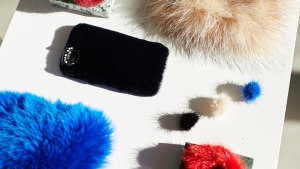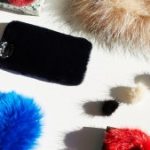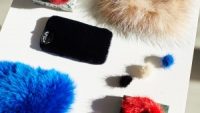Cool Or Cruel? Why Nina Cheng Says It’s Ok To Buy Her Funky Fur Phone Cases
When Gisele Bundchen appeared earlier this month on the cover of Paris Vogue’s faux fur issue, animal activists hailed it as a major victory. After all, more than a decade ago, PETA stage invaders crashed a New York catwalk with signs declaring “Gisele: Fur Scum.” It was 2002 and the anti-fur movement that exploded in the 1990s was still hot. Bundchen, now the highest-paid model in the world, was just 22. Tom Brady’s wife has since become an ally of the group that once protested her and declared on Instagram that wearing real fur “is never an option.”
But for millennial fashionistas who didn’t witness the days when activists egged women wearing mink coats and tossed a dead raccoon at “fur hag” Anna Wintour, fur is no longer as taboo. In fact, it’s been making a quiet comeback.
Over the last few seasons, more than 70% of the fashion week shows in Paris, New York, Milan, and London have featured fur in some form. Most notably, Fendi, which first began as a fur house, has returned to its roots by doing “haute fourrure” fashion shows that feature nothing but fur. And these days, Fendi also makes fur keychains and bag charms in bright colors that, at $600, are more affordable than the brand’s fur coats that can cost as much a $1 million.
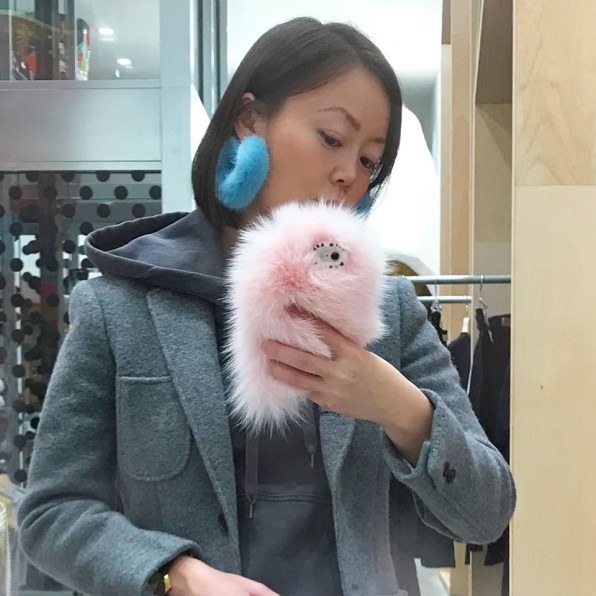
Nina Cheng, a former investment banker, noticed the trend and had an epiphany as she whipped out her cell phone in the middle of a frigid New York winter. “I thought to myself, ‘Wouldn’t it be nice if there was a way to make our phones nice and furry in the winter? Maybe I should make a phone case out of fur.’”
Cheng decided to make one for herself. She drove nine hours from New York to Maine where she found a fur seller. She then worked with a designer to 3D print a phone case and used fur cutting tools to create her first case on her coffee table at home. She discovered that there are now modern technologies and cutting equipment that allow you to create smaller fur products than those that existed in the past.
She proudly carried the phone case around town and quickly found that friends and strangers would stop her to ask where she got it. She knew then that she was onto something and decided to launch a company, Wild and Woolly, to make small, colorful fur accessories, from $405 phone cases to $350 hoop earrings and $98 round studs. The brilliant thing about these accessories is that they can be worn year-round, rather than just in the winter.
While Cheng’s brand is on the higher end of the market, it appears to be part of a broader trend of creating small accessories made from real fur. A quick search on Etsy generates hundreds of fur earrings that cost as little as $12. Bergdorf Goodman sells $45 rabbit fur neck warmers. And the wildly popular outerwear brand Canada Goose uses coyote fur trim on its parkas.
Many brands say their fur is sourced ethically, but fur continues to be a contentious topic. PETA makes the case that the only truly ethical fur is no fur. “These animals continue to be raised in small cages and killed in absolutely gruesome ways that are unacceptable to the average consumer,” Ashley Byrne, PETA’s associate director of campaigns tells Fast Company.
It is still early days for Cheng’s brand, which generates less than $1 million in sales, but things are looking up. Wild and Woolly has grown quickly, with premium retailers around the world like Opening Ceremony in New York, Harvey Nichols London, and Leclaireur in Paris picking up the products. The brand has also been a hit in Japan, where it fits into quirky Japanese street style; and the Middle East, where women love to wear fur, but can’t wear coats because of the heat.
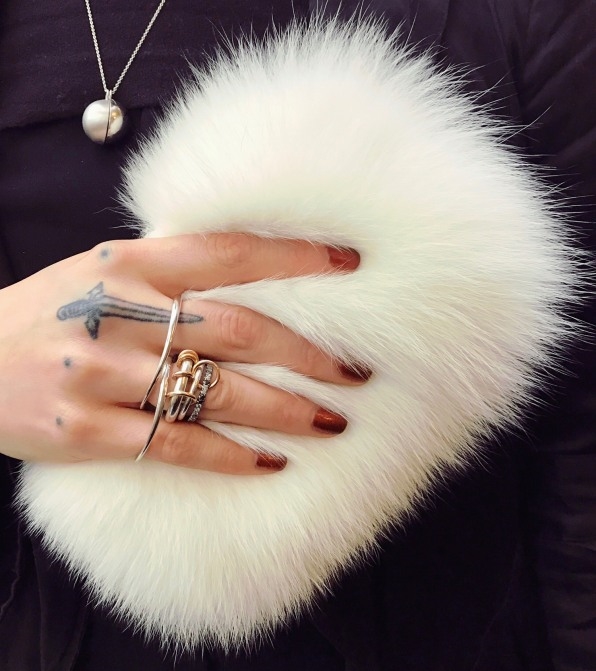
The phone cases have also made a splash with celebs: Kim Kardashian, Kylie Jenner, and Caroline Vreeland, have been spotted with them. They’re hard to miss since they are fluffy and come in bright colors. Cheng, who quit her day job to focus entirely on these poofy fur accessories, now plans to expand her product range to include bags.
Cheng says she’s fascinated by fur’s storied history in America. The demand for fur was a driving force for frontiersmen who pushed ever westward in the 1800s. They traveled great distances, in dangerous circumstances, across the Midwest to purchase beaver, sea otter, and buffalo pelts from Native Americans, to bring back to customers on the East Coast.
To honor these daring pioneers, Cheng named each of the phone case designs after a different fur trading post, like canary yellow Kullyspell and emerald green Nisqually. “I was inspired by this early history of America,” Cheng explains. “There was such a spirit of adventure from this period of history. And it was an early example of trade between different communities.”
Through the process of building out the supply chain for her business, Cheng has learned a great deal about how fur is sourced. “PETA was very successful at calling out the problems with the fur business throughout the ’80s and ’90s,” she says. “I’ve found the fur industry is extremely well regulated now.”
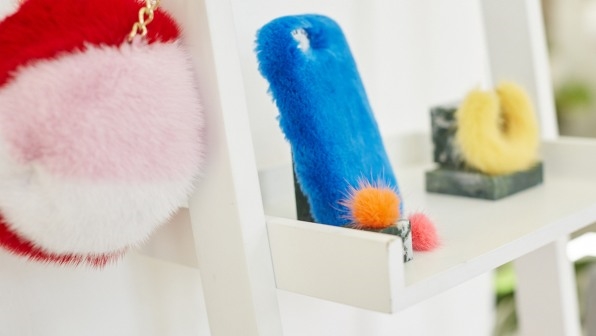
Wild & Woolly sources most of its furs from Saga Furs, a Finnish brand that sources ethical and sustainable fur from European sources then sells them at global auctions. These pelts come from fur farms where foxes and minks are bred specifically for their fur. While heavily regulated by the EU, activists argue that the conditions the animals live under are still unacceptably cruel.
Cheng says that she only sources Saga’s Certified Collection, which require third party auditing for 32 criteria that extend beyond E.U. requirements, including how the animals are treated and how hygienic the farms are.
PETA, for its part, questions how ethical all of Saga’s furs are. “Saga both claims programs for animal welfare and disavow any responsibility for the animal welfare of suppliers under their umbrella,” Byrne says. “So, it really means nothing.”
That said, much of the world’s fur comes from China, where the industry is poorly regulated. Conditions are far worse, with many animals forced to live their short lives out in tiny, filthy cages, where they are exposed to many diseases.
Cheng also sources fur directly from a Yup’ik Eskimo village in Western Alaska, where the natives use traditional methods to source fur. Rather than farming, they hunt wild animals and then ensure each part of the carcass is used. Besides salmon fishing, selling fur is their only source of income.
“These Eskimos live really far away from civilization,” Cheng says. “In some cases, the only way to get to their village is to travel by helicopter or snowmobile.”
Cheng wants to continue finding ways to support these Eskimos by buying their fur, partly because the quality is top-notch, but also because their lives encapsulate everything that she loves about fur.
“We’re used to thinking about fur in these dark, ugly terms because the fur trade around the world really was terrible for a long time,” she explains. “But I want people to remember a different era of fur trading, when people lived out on the frontiers and went on great adventures in pursuit of fur. That’s what I want my brand to represent.”
Fur is not dead: Design startup Wild and Woolly makes a splash with colorful fur accessories—phone cases, bags, and even earrings.
When Gisele Bundchen appeared earlier this month on the cover of Paris Vogue’s faux fur issue, animal activists hailed it as a major victory. After all, more than a decade ago, PETA stage invaders crashed a New York catwalk with signs declaring “Gisele: Fur Scum.” It was 2002 and the anti-fur movement that exploded in the 1990s was still hot. Bundchen, now the highest-paid model in the world, was just 22. Tom Brady’s wife has since become an ally of the group that once protested her and declared on Instagram that wearing real fur “is never an option.”
Fast Company , Read Full Story
(66)

